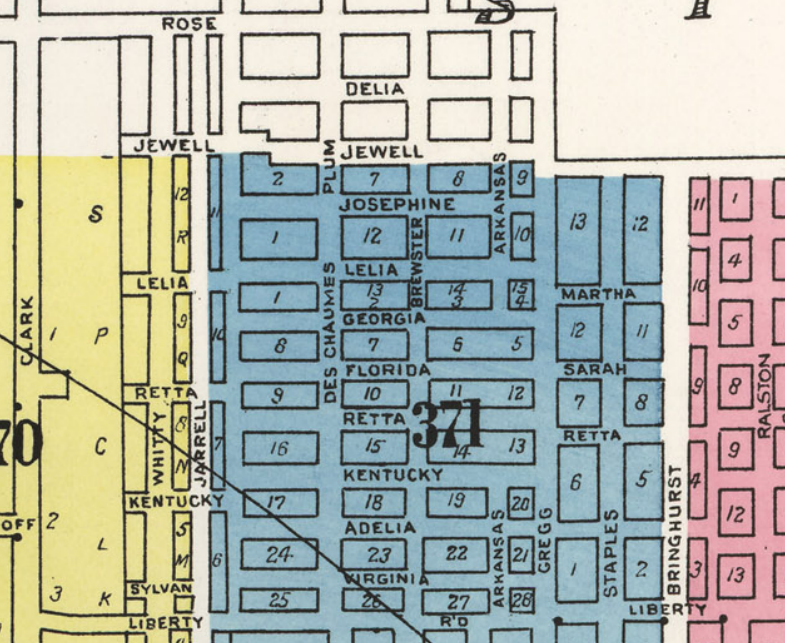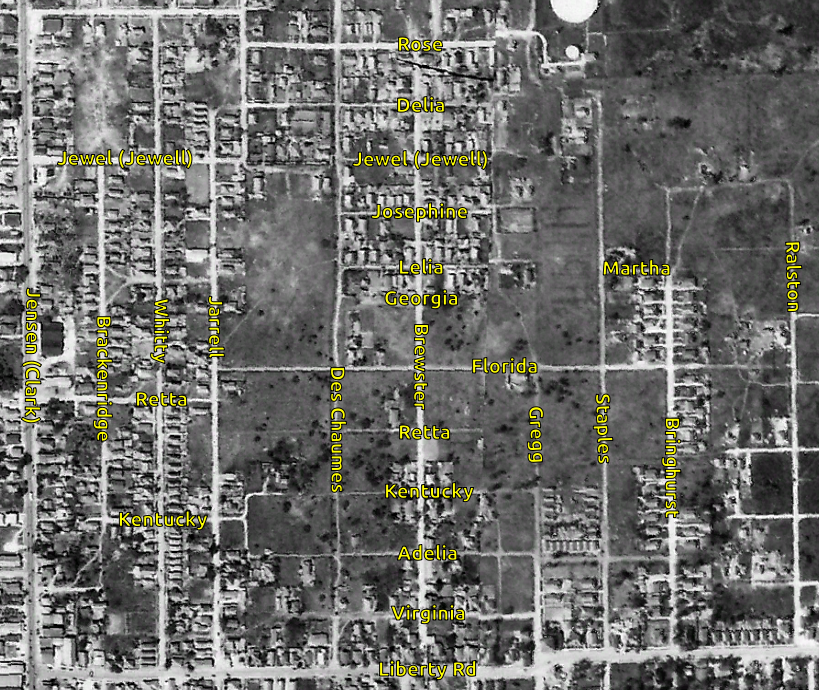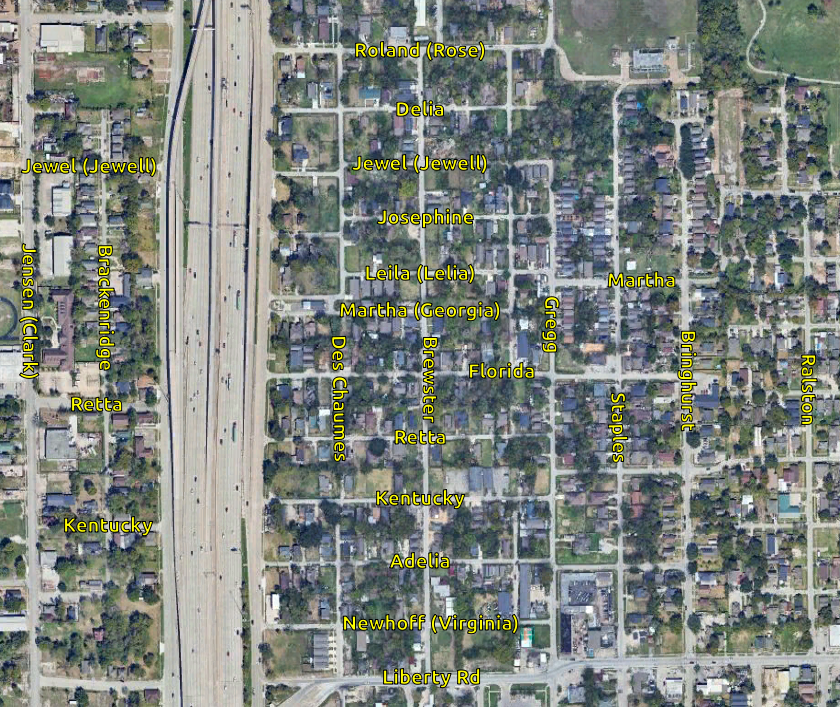Frenchtown: Where the gumbo was hot and the accents were thick
Frenchtown Origins
On November 7, 1947, Sigman Byrd took his readers on a stroll to Frenchtown, a Creole-French neighborhood to the northwest of Houston’s 5th Ward. The boundaries of Frenchtown were considered to be Clark (Jensen), Liberty, Ralston, and Rose (Roland) Streets.
This lively neighborhood was founded by “colored” Louisianians, also known as Creoles, whose bloodline contained an African, Spanish, and French admixture. The first wave of Louisiana Creoles arrived in Houston after World War I. The second wave was due to the Mississippi Flood of 1927 which displaced many Creoles from their homes and farms.
Houston was the railroad hub of the nation and the Fifth Ward provided ample employment opportunities within the industry. For many of these former Louisiana residents, this neighborhood was the perfect place to rebuild their lives.

“Donner le main”
For its first few decades, Frenchtown was rich with the culture, traditions, and history of its Louisiana Creole inhabitants. Family was the center of the community and everyone pitched in. The community kept an eye out for each other and “Donner le main,” or “to hold hands,” was the Frenchtown way of doing things.
It was not uncommon for neighbors to watch the children of another family or for the entire community to build a home for someone else. Even leisurely activities and get-togethers were always community-centric. Festivals playing lively music (now referred to as zydeco) and house-parties called “la-la’s” were Frenchtown’s way of having fun.
Many of Frenchtown’s older residents spoke French or Creole Patois and didn’t speak or understand English very well. They built their own school, church, and stores for the community, and were for all intents and purposes, and self-contained Creole village in the midst of a growing Houston. In 1947, Byrd estimated that the population of Frenchtown was somewhere between 3,000 and 10,000 residents.
While the older generation continued their cultural traditions, the younger generations began to assimilate into Texan culture.
Laura Dupree: The Matriarch of Frenchtown
Sigman Byrd spoke with Laura, 67, within her grocery store regarding Frenchtown’s newest generation. According to Laura, in the almost 3 decades of Frenchtown’s existence, she was seeing fewer Creole customs taking place. Her take was that the new generation wanted to “be Texas” instead of Creole. As an example, more homes were being built by paid carpenters, rather than the traditional “donner le main” fashion.
Laura’s daughter, Annie Laurie, used her new home as proof to refute her mother’s argument. She and her husband, Claude Norwood, bought their home @ 3018 Jewell (Jewel) the year prior. The home was cleaned and prepared with help from the community. Claude was also learning French, which is a testament to the cultural traditions that were still going strong in the community.
Suddenly, a jukebox in the aptly-named Creole Nightclub across the street began to blast “The Port Arthur Waltz” by Cajun fiddler, Harry Choates. Laura Dupree covered her ears and exclaimed to Byrd, “This is what I mean.” Creole Nightclub was run by one of the first Creole families to settle in the area, John and Lilli Robey.


Community Establishments
The late 1950’s and early 1960’s brought destruction to the once thriving community. The construction of Highway 59 rid Frenchtown of two entire streets, Whitty and Jarrell, along with many homes and businesses. Additionally, the 60’s brought integration. Businesses and neighborhoods that originally did not allow Black people were now forced to do so. The younger generation of Frenchtown could now move to new neighborhoods and explore areas of Houston that they were previously barred from.
These factors caused a severe decline in profits for the Frenchtown and Fifth Ward businesses that had thrived for decades. Dupree Grocery, Laura Dupree’s grocery store @ 3010 Jewell Street, was no exception. Built in 1939, the community store met the same demise as many other Fifth Ward businesses in the area.
The 1946 home of Laura’s daughter, Annie Laurie, and her husband, Claude @ 3018 Jewell (Jewel) Street is also gone. For reference, the wooden home directly to the left of the lot below is 3020 Jewel Street.
The Robey family’s Creole Nightclub (3101 Jarrell Street) also no longer exists. Two Frenchtown streets, Jarrell and Whitty, were located exactly where Highway 59 and its feeder roads are located now.
Another long gone Frenchtown establishment is Chevalier Grocery at 3008 Brewster. Sigman described the grocery store, run by Armand and Mary Rose Chevalier, as the “social center for Frenchtown.” Byrd asked the owners their opinion on Louisiana traditions, and whether or not they were dying out, and Armand Chevalier had an interesting response:
Armand Chevalier, owner of Chevalier Grocery
“…But we are a Breaux Bridge people. We have Creole blood. We stay in the store and mind our own business. If the Lafayette and Opelousas people want to live like the Texas Negroes, that’s their business.”
Hope for Frenchtown
Laura Dupree died July 4, 1957 from uterine cancer at the age of 76. With her death, and the deaths of the other leaders of Frenchtown, the history began to die with them. There have been efforts to revitalize the community and preserve the history that is left, such as the now defunct Frenchtown Community Association, which disbanded after the death of its leader. Many of the organizers of the Frenchtown Community Association are still working with other leaders in the Frenchtown community to preserve the history and renovate abandoned homes in the area.